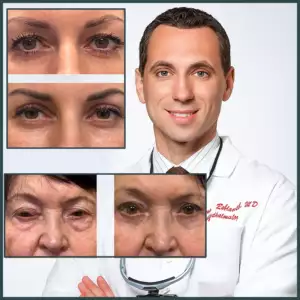
Upper eyelid blepharoplasty is no longer just a cosmetic intervention. It has proven medical value. Clinical studies show measurable improvements in vision, reduction in headaches, and overall enhancement in day-to-day comfort. Many patients also report improvements in peripheral vision, light sensitivity, and eye strain after the procedure. These results often translate into better confidence and social engagement.
Additional findings highlight decreased dry eye symptoms and improved tear film stability. When performed correctly, complication rates remain low—typically under 10%. Satisfaction rates hold steady at over 85% even years after surgery, with revision surgery needed only in a small fraction of cases.
Widening Access and Its Effects
The cost of blepharoplasty has come down, and techniques have become more efficient. As a result, more patients can now access the procedure. In the U.S., interest in eyelid surgery has nearly doubled over the past decade. While overseas “surgery tourism” has declined slightly, domestic demand continues to rise.
Increased access brings real-world benefits. More people can address problems like visual field obstruction or chronic eye fatigue. It’s also linked to improvements in mood, appearance-related confidence, and general well-being. But this availability isn’t without downsides. Social media filters and image culture often influence expectations, sometimes encouraging people to seek surgery for reasons more tied to approval than need.
Social Pressure, Identity, and Responsibility
As cosmetic eyelid surgery becomes more common, so does the pressure to look a certain way. Surveys suggest a growing number of individuals feel the need to “correct” even natural features like hooded eyes, simply to align with beauty standards promoted online.
There’s also the issue of what’s now called “Snapchat dysmorphia”—a growing trend of people wanting to look like their filtered selfies. In some cases, it escalates into obsession. Around 1 in 50 Americans show signs of body dysmorphic disorder related to appearance.
Still, for many, cosmetic surgery serves a practical role. It can reduce bias tied to age or tired appearance, help people feel more in control of their image, and support professional or personal confidence in social settings.
Looking Ahead: Key Developments
1. Customization Over Standardization
Modern blepharoplasty techniques prioritize subtle adjustments rather than dramatic changes. Surgeons are tailoring results based on the patient’s facial structure, ethnicity, and goals—not simply applying a one-size-fits-all model.
2. The Role of Digital Influence
More patients arrive at consultations with filtered images or influencer references. This shifts how surgeons must communicate. Clear, medically accurate information is becoming as important as the surgery itself.
3. Cross-Cultural Demand
Countries like South Korea, where cosmetic procedures are deeply integrated into mainstream culture, continue to influence global trends. Blepharoplasty there is often part of identity affirmation, not just aesthetic preference.
4. Mental Health Screening
With appearance anxiety on the rise, some clinics now recommend or require mental health evaluations before surgery. The goal is to identify patients whose expectations may not align with clinical reality.
Summary
Blepharoplasty sits at the intersection of medicine, aesthetics, and social psychology. Its effects are not limited to how someone looks—they extend to how they see, feel, and engage with others. Research confirms its functional and emotional benefits. But it also comes with new responsibilities: to ensure patients are choosing the procedure for the right reasons, to protect against unrealistic expectations, and to preserve the line between enhancement and distortion.
The future of blepharoplasty will likely focus less on transformation and more on refinement—preserving what’s unique in each face while addressing genuine medical or structural concerns. That shift already reflects a broader cultural pivot toward authenticity over perfection.
At Eye Plastics NYC in Brooklyn, NY, Dr. Alexander Rabinovich, MD specializes in a full range of advanced eyelid procedures, including both functional and aesthetic techniques. He offers precise, natural-looking
upper eyelid blepharoplasty surgery
to remove excess skin, improve vision, and restore a more youthful contour. For many patients, a bilateral upper eyelid lift provides not only aesthetic enhancement but also a significant improvement in daily comfort and field of view.
For more comprehensive rejuvenation, Dr. Rabinovich performs
lower eyelid blepharoplasty
to reduce puffiness, under-eye bags, and sagging skin below the eyes. Patients seeking full upper and lower eyelid correction can choose the
Four Lid (Quad) Blepharoplasty—
a highly specialized procedure that addresses all four lids in one surgical session. This option is ideal for individuals looking for total periorbital transformation with minimal downtime and cohesive results.

Leave a reply